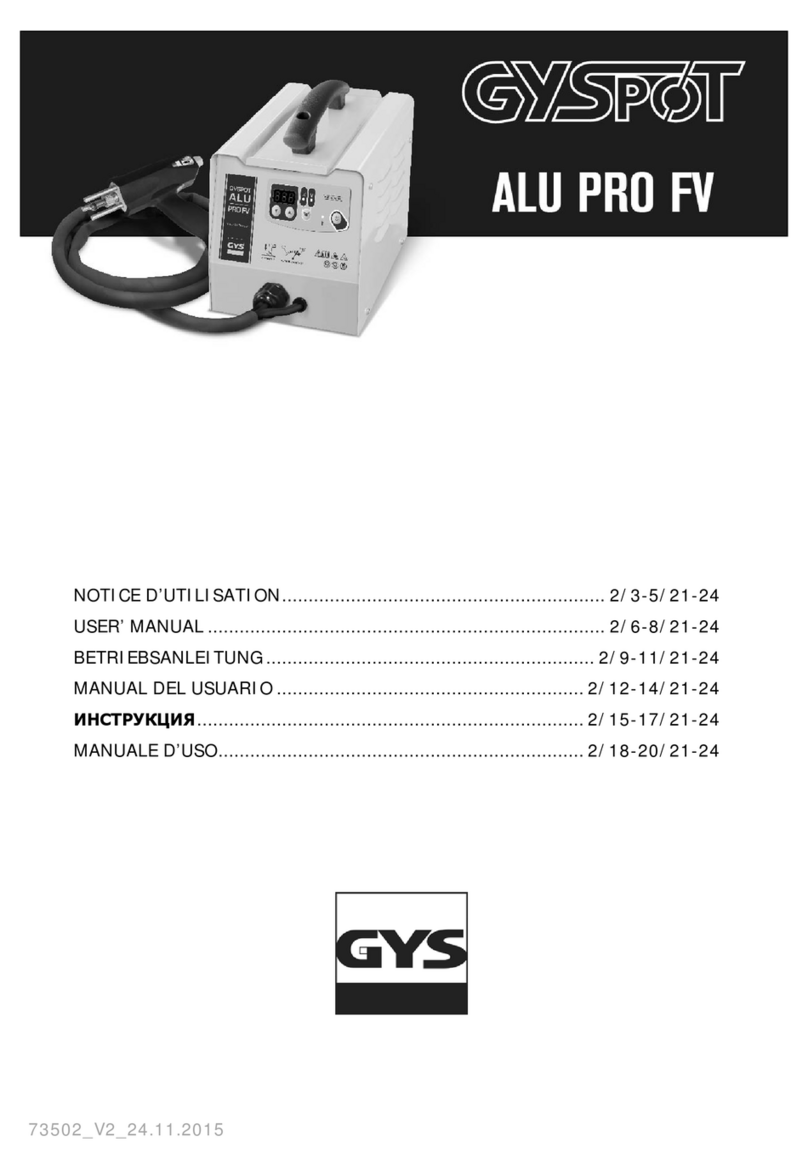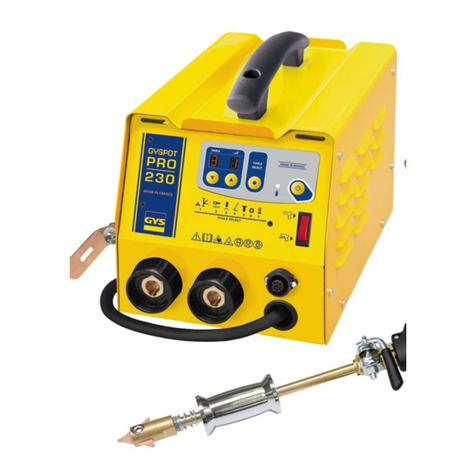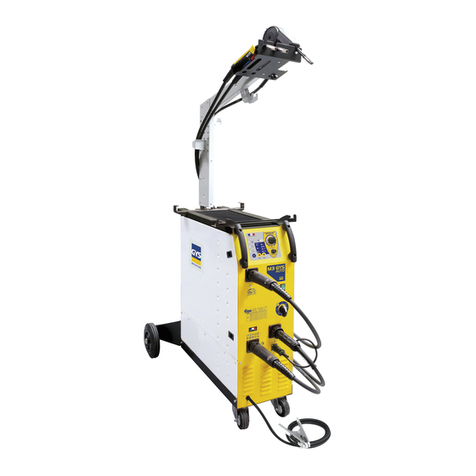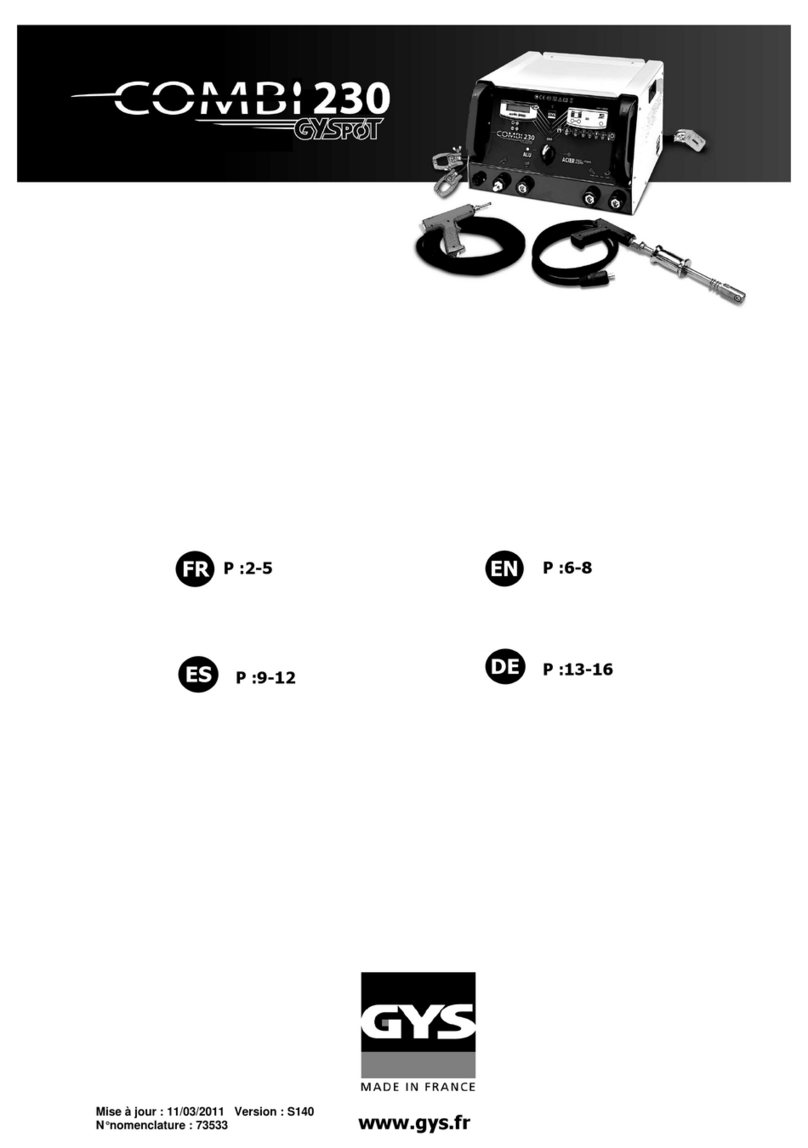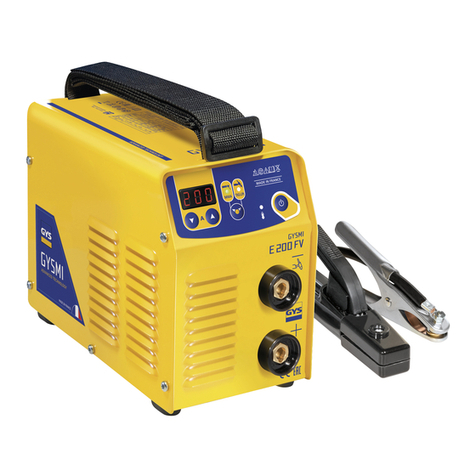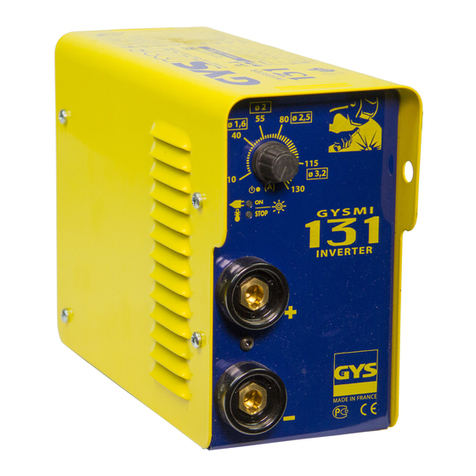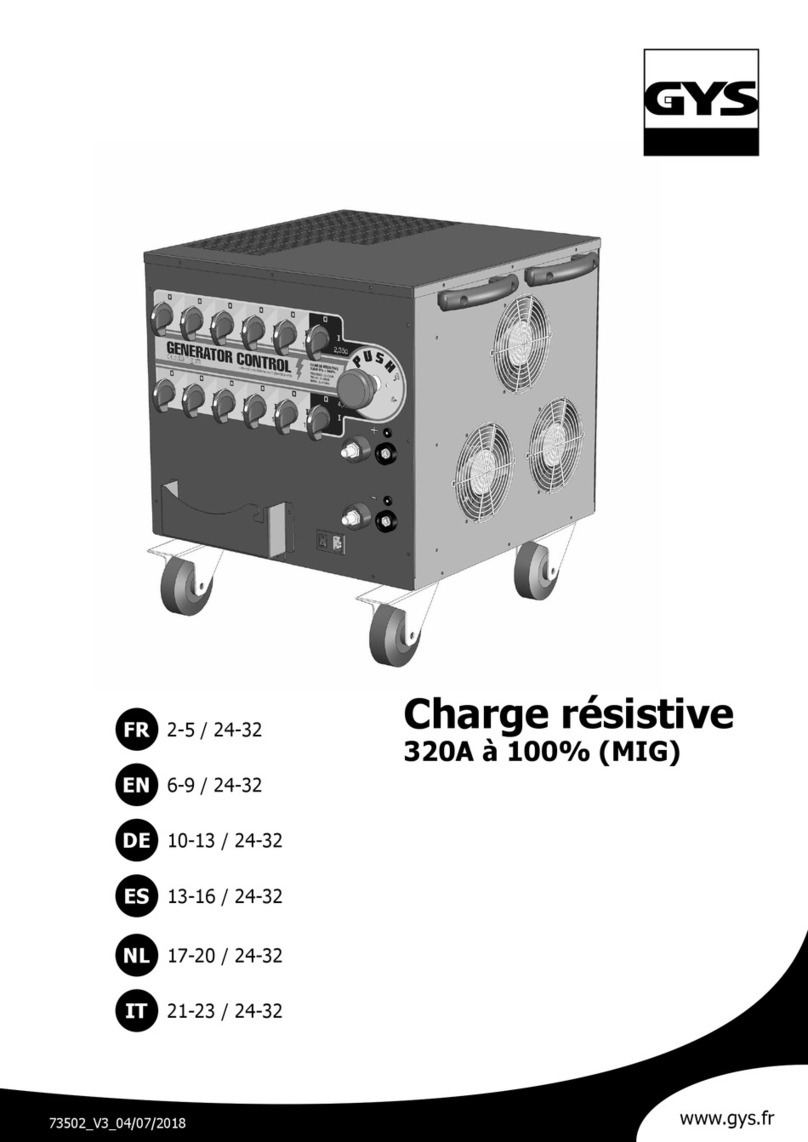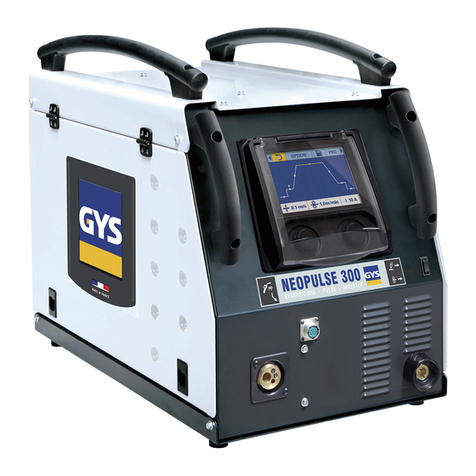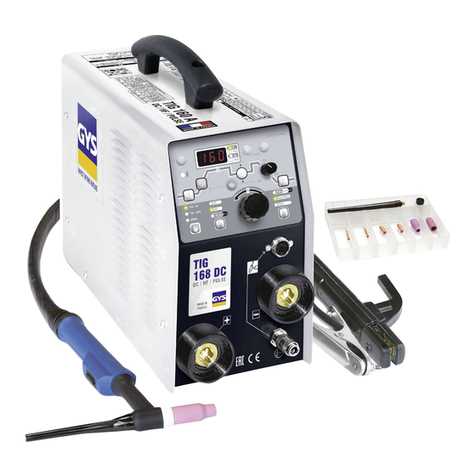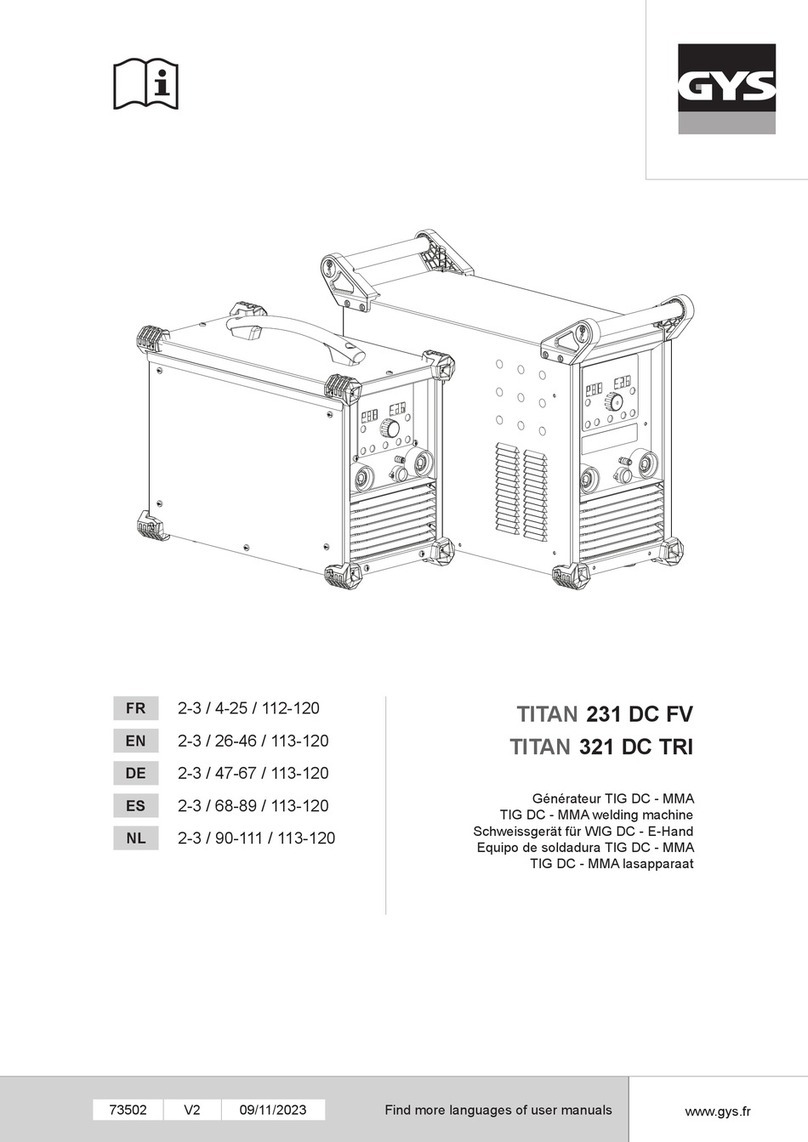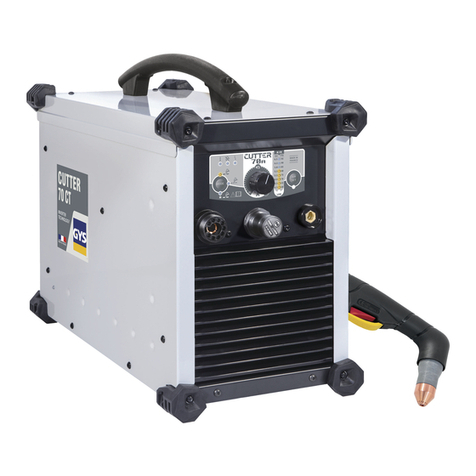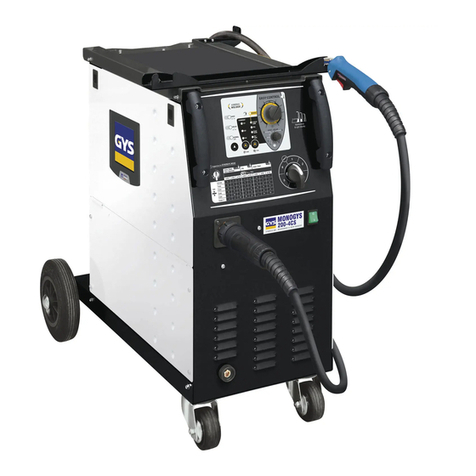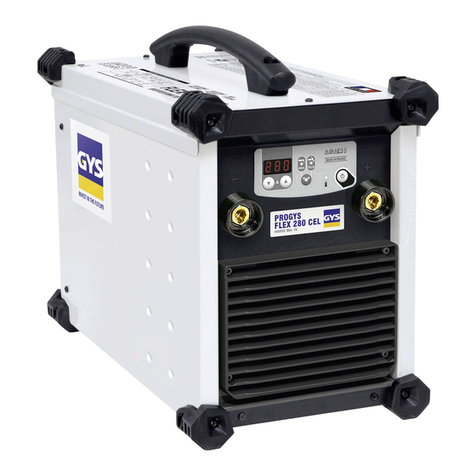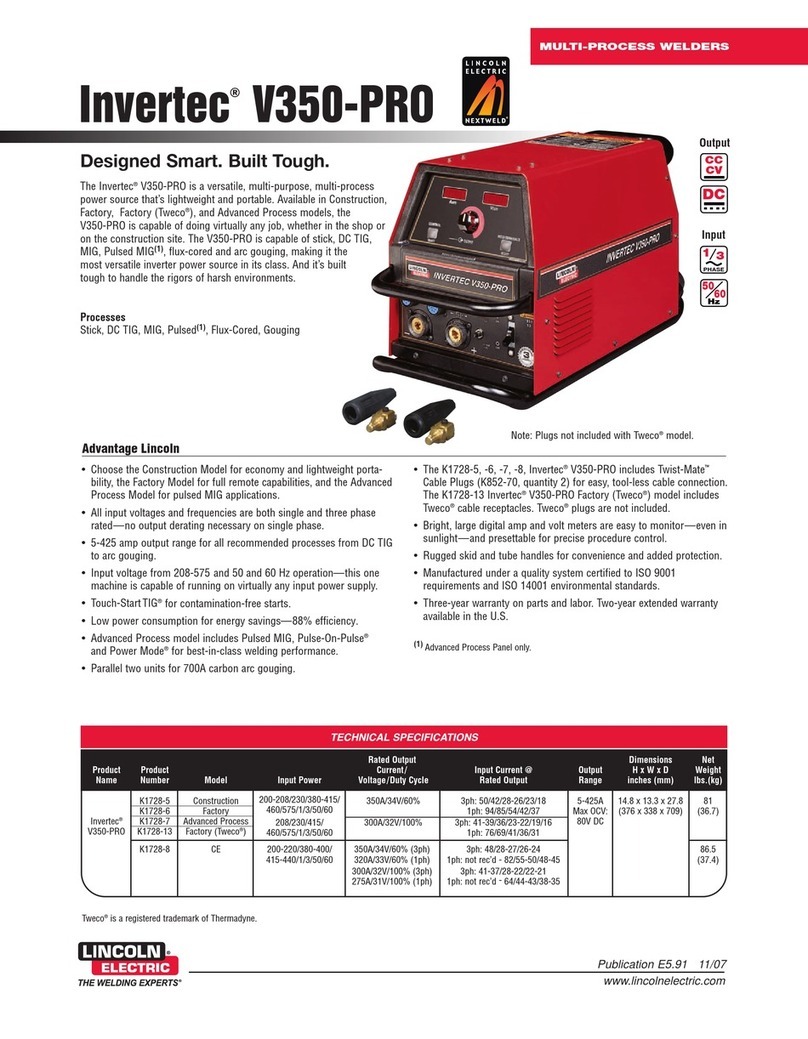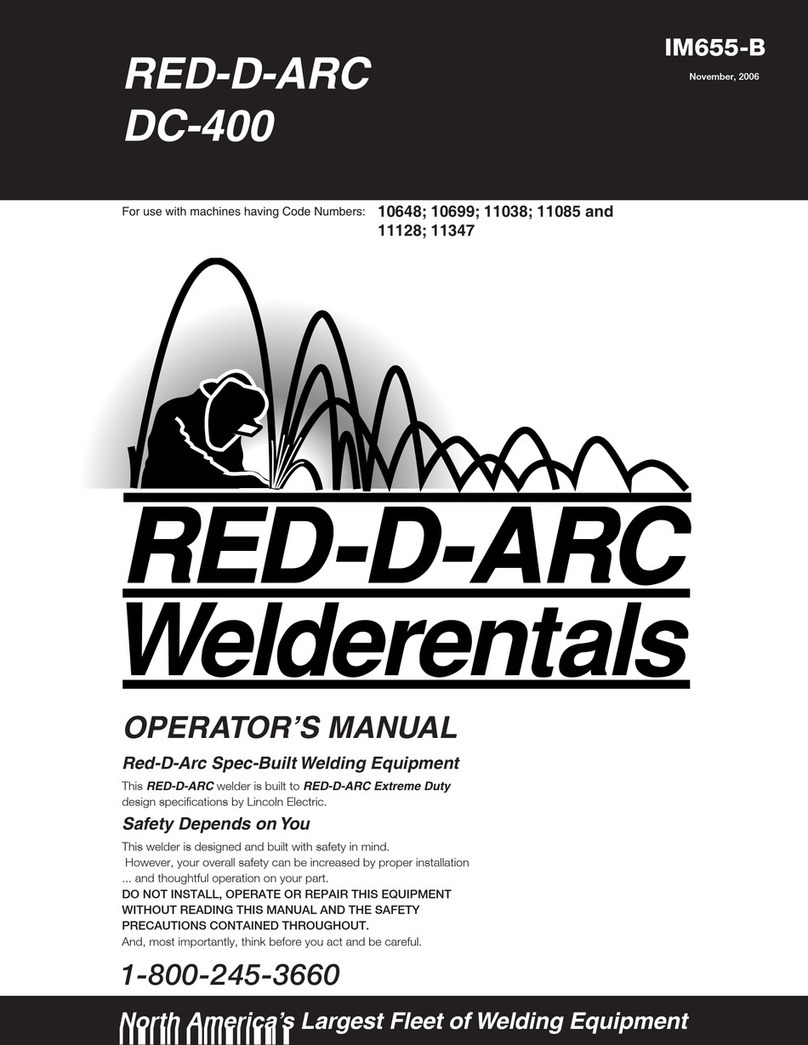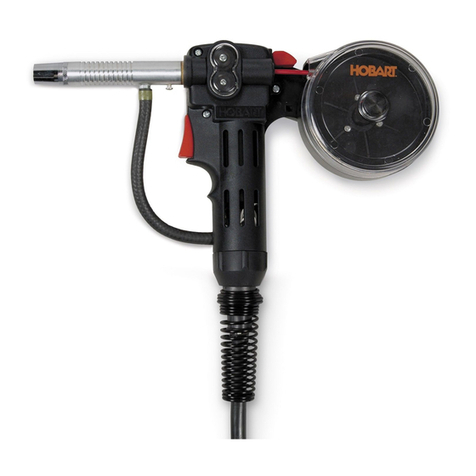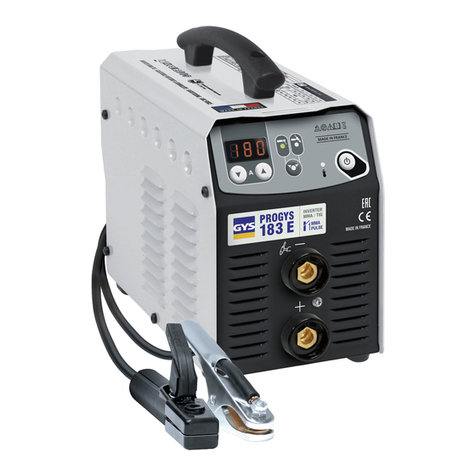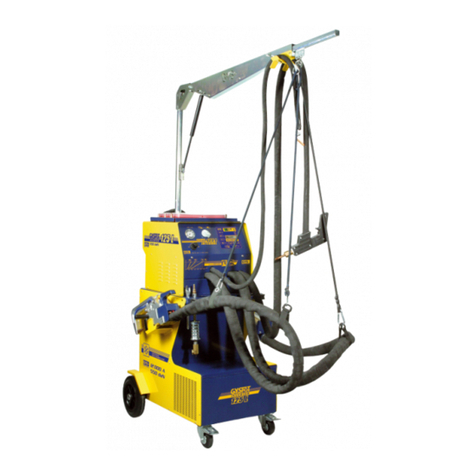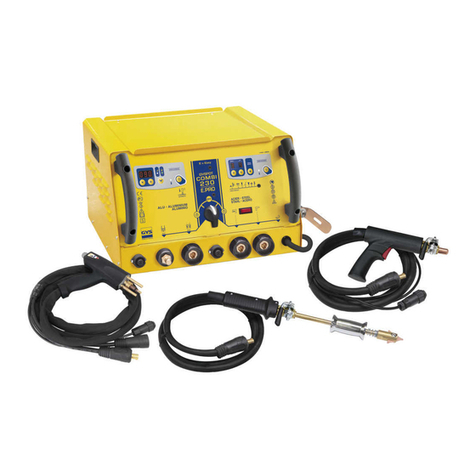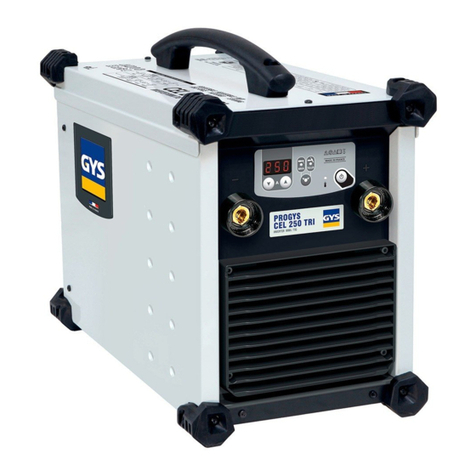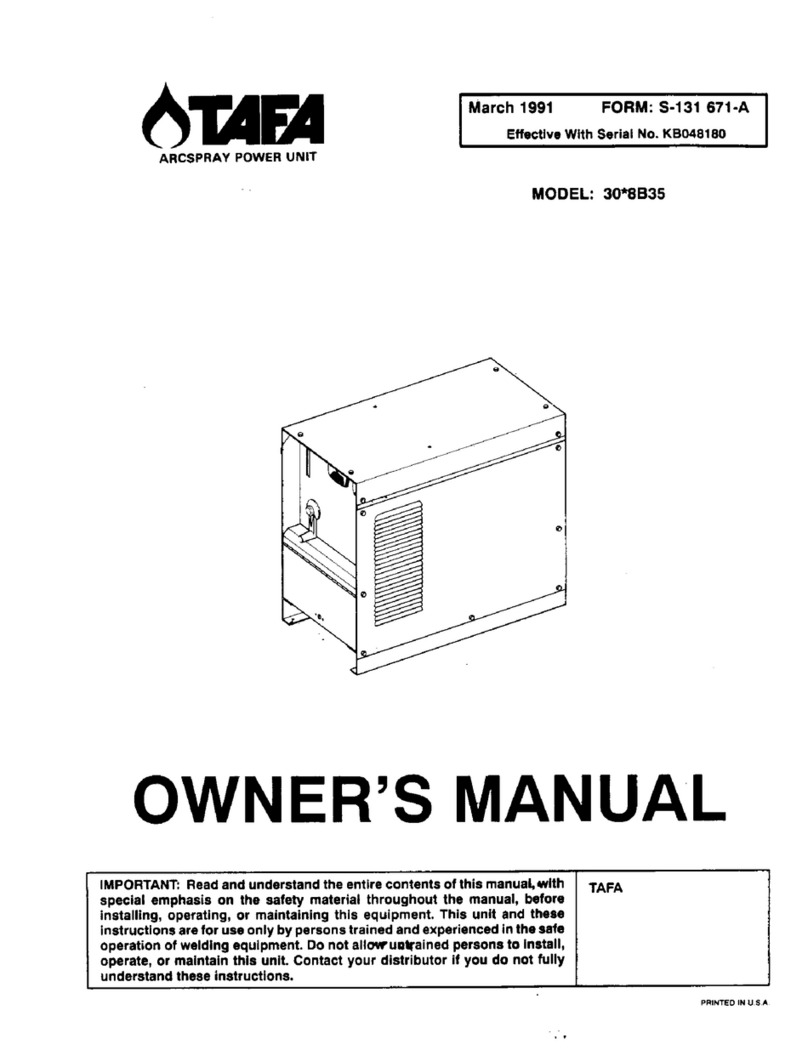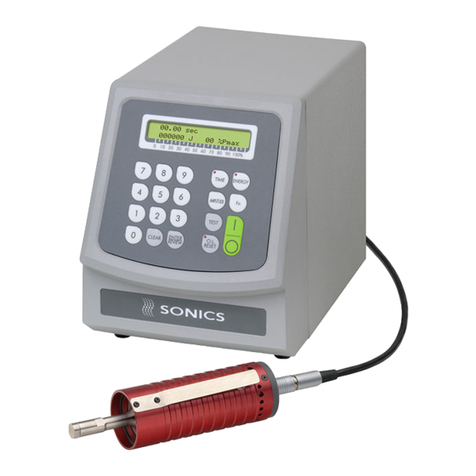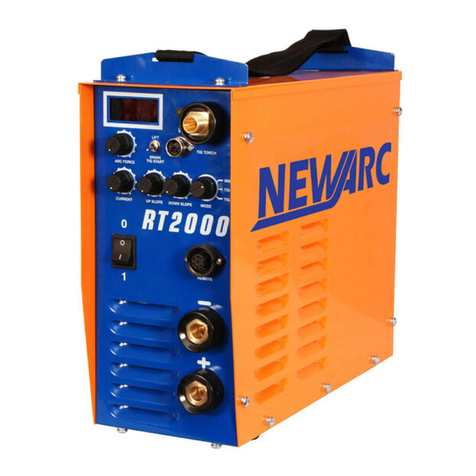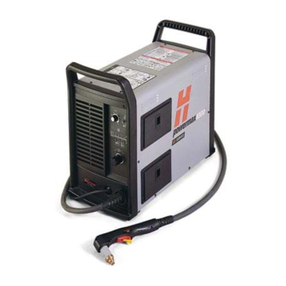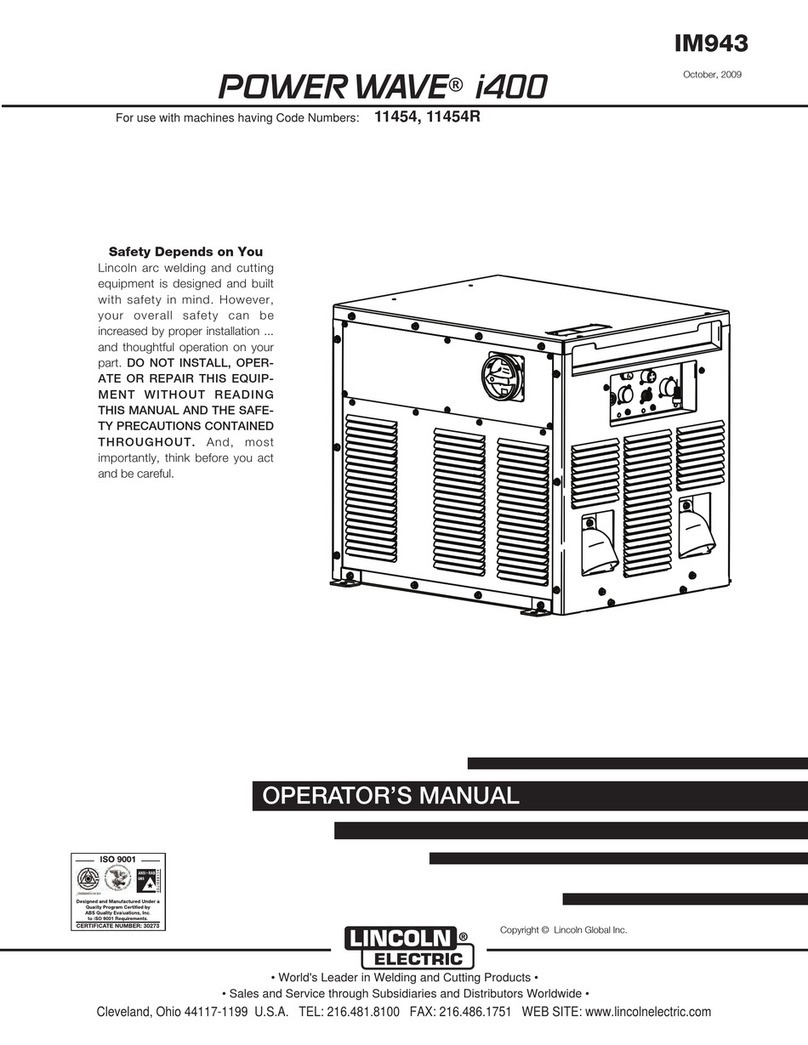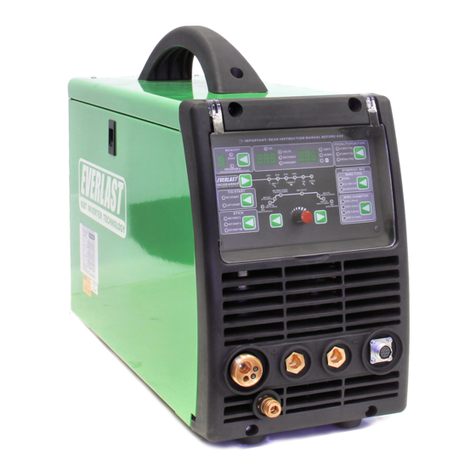
3
DESCRIPTION
Merci de votre choix ! Afin de tirer le maximum de satisfaction de votre poste, veuillez lire avec attention ce qui suit :
Le Trimig 3 5-4 S est un poste de soudure semi-automatique « synergic » sur roues, ventilé pour le soudage (MIG
ou MAG). Il est recommandé pour le soudage des aciers, des inox, des aluminums. Son réglage est simple et rapide
grâce à sa fonction « vitesse de fil synergique ». Il fonctionne sur une alimentation 400V triphasée.
ALIMENTATION ELECTRIQUE
Le courant effectif absorbé (I1eff) pour les conditions d'utilisation maximales est indiqué sur l'appareil. Vérifier que
l'alimentation et ses protections (fusible et/ou disjoncteur) sont compatibles avec le courant nécessaire en utilisation.
L'appareil doit être placé de façon telle que la fiche de prise de courant soit accessible.
Ne pas utiliser de rallonge ayant une section inférieure à 4 mm². Le TRIMIG 385-4S est livré avec une prise 32A
de type CEE 7/7. Il doit être relié à une prise 400V 3Ph. AVEC terre protégée par un disjoncteur 32A et un
différentiel 30mA.
DESCRIPTION DU POSTE
① Interrupteur marche – arrêt
② Réglage de puissance par 2 commutateurs (2 et 7
positions) permet d’ajuster la tension de soudage en
sortie de générateur. Le réglage de tension de sortie
est proportionnel à l’épaisseur du matériau à souder.
(cf page 6)
③ Clavier de réglages des paramètres de soudage
(mode manuel ou automatique).
④ Raccords torche au standard européen.
⑤ Voyant de protection thermique sur le clavier de
commande : signale une coupure thermique
lorsque l’appareil est utilisé de façon intensive
(coupure de plusieurs minutes).
⑥ Support torches avant
⑦ Câble d’alimentation (5m)
⑧ Sortie pince de masse.
⑨ Support bouteilles (maxi une bouteille de
10m3).
⑩ Chaine de fixation pour bouteilles.
Att ntion : bi n fix r l s bout ill s
⑪ Support bobine Ø 200/300 mm.
⑫ Electrovanne torche.
⑬ Support cables arrière.
SOUDAGE SEMI-AUTOMATIQUE EN ACIER / INOX (MODE MAG)
Le Trimig 3 5-4S peut souder du fil acier et inox de 0, /1/1,2. (figure ⑮)
L’appareil est livré d’origine pour fonctionner avec du fil Ø 1 mm en acier( galets Ø 0, /1)
Lorsque vous utilisez du fil de diamètre 1 mm ; il convient d’utiliser une torche avec un tube contact de 1. Le galet
du moto-dévidoir est un galet réversible 0, / 1mm. Dans ce cas, le positionner de telle façon à lire 1 mm sur le flanc
visible du galet.
L’utilisation en acier ou inox nécessite un gaz spécifique au soudage argon + CO2 (Ar + CO2 ).La proportion de CO2
varie selon l’utilisation. Pour le choix du gaz, demander conseil à un distributeur de gaz. Le débit de gaz en acier se
situe entre et 12 L/min selon l’environnement et l’expérience du soudeur.
SOUDAGE SEMI-AUTOMATIQUE ALUMINIUM
Le Trimig 3 5-4S peut souder du fil aluminium de 1 mm et 1,2 mm. (figure ⑯)
Pour souder l’aluminium, il faut utiliser un gaz neutre: argon pur (Ar). Pour le choix du gaz, demander conseil à un
distributeur de gaz. Le débit du gaz se situe entre 15 et 25 L/min selon l’environnement et l’expérience du soudeur.
Ci-dessous les différences entre l’utilisation soudage acier et soudage aluminium :
-La pression des galets presseurs du moto-dévidoir sur le fil : mettre un minimum de pression afin de ne pas
écraser le fil.
-Tube capillaire : retirer le tube capillaire avant de connecter la torche aluminium avec une gaine en téflon.
-Torche : utiliser une torche spéciale alumimium. Cette torche possède une gaine téflon afin de réduire les
frottements.
- NE PAS coup r la Gain au bord du raccord ! cette gaine sert à guider le fil à partir des galets.(cf schéma ⑯)
Tube contact : utiliser un tube contact SPECIAL aluminium correspondant au diamètre du fil.
